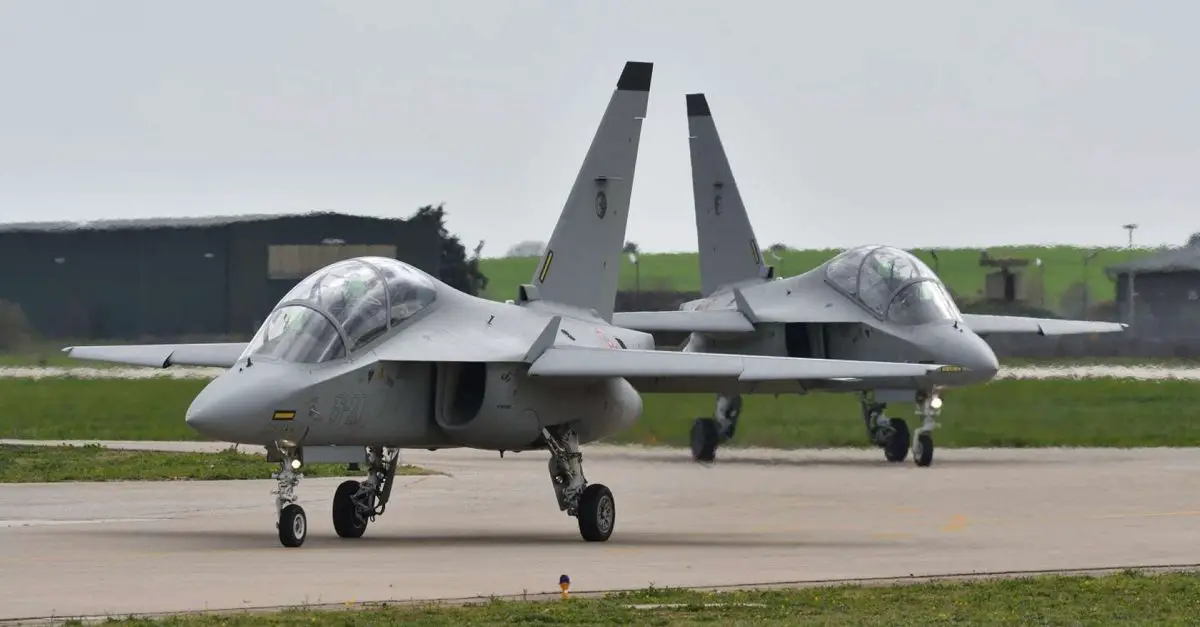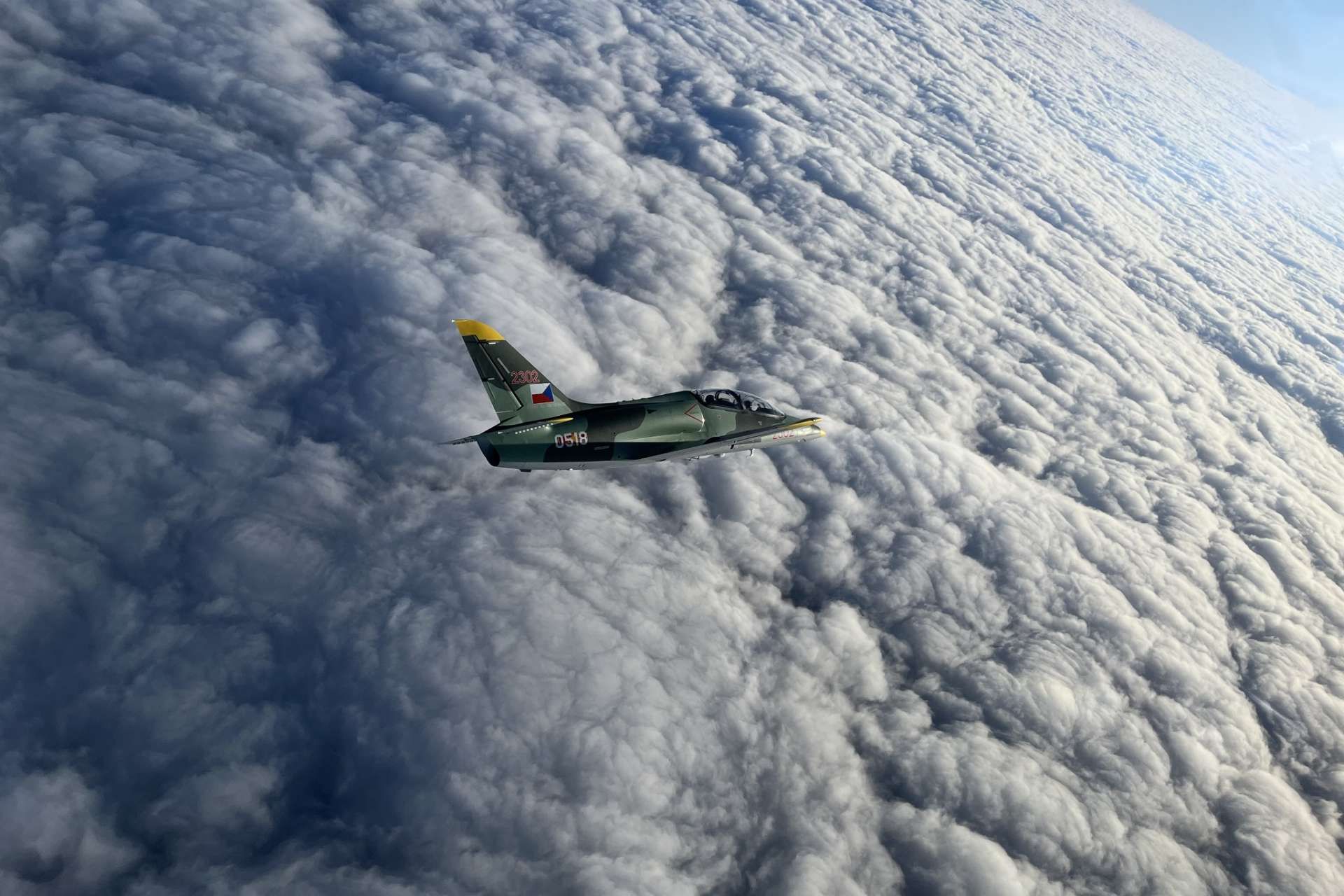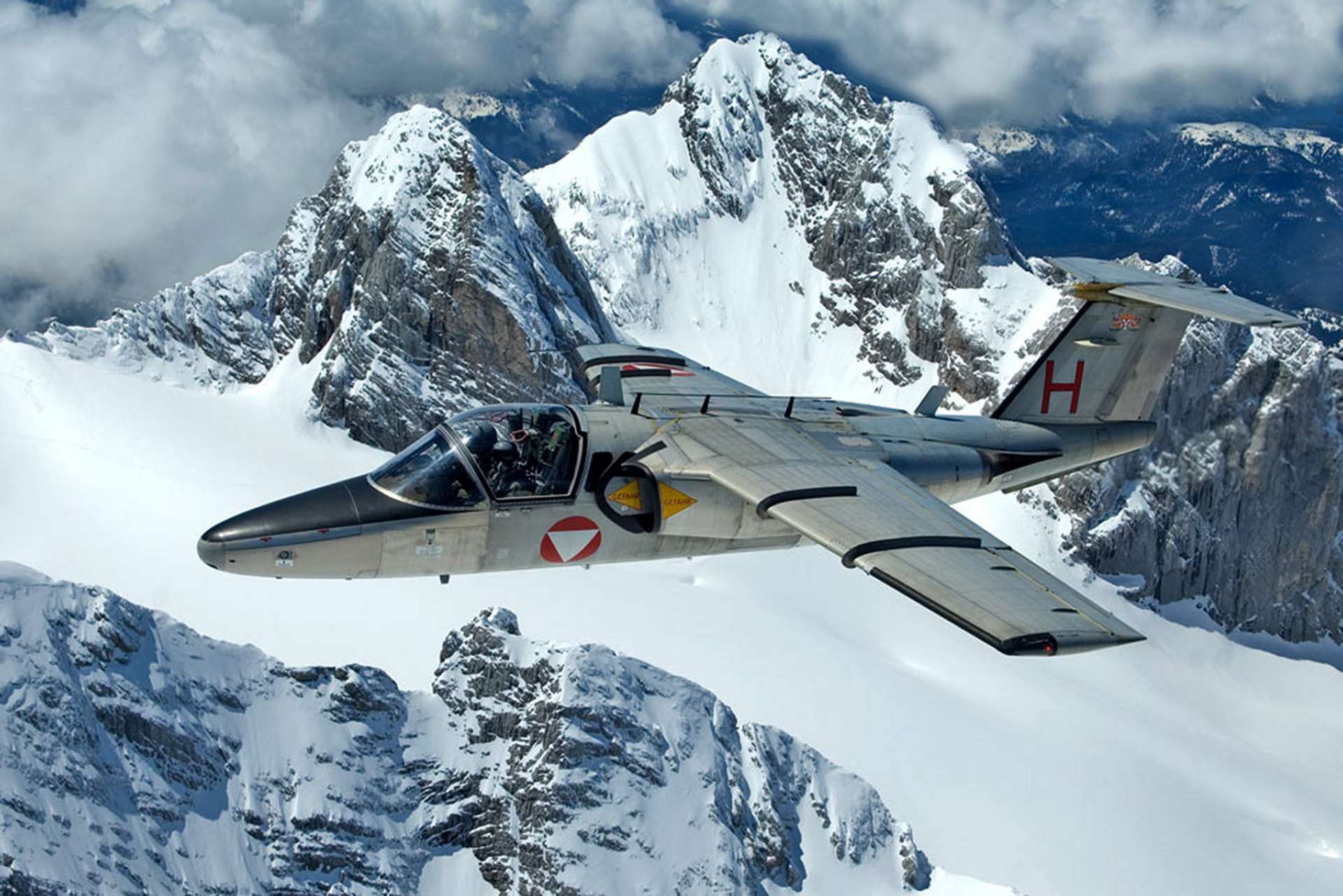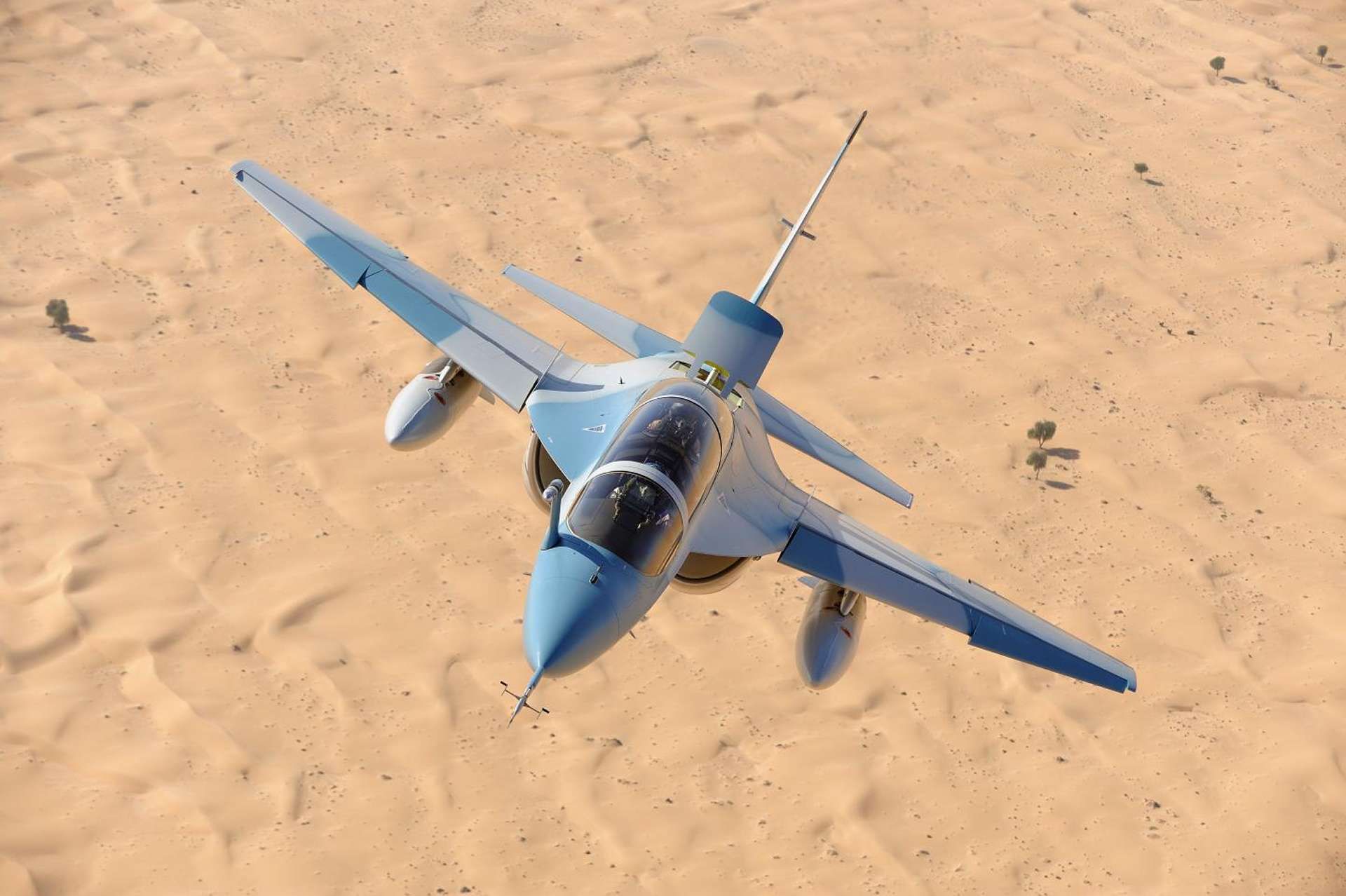Breaking News
Austrian Defence Minister confirms talks for 12 Leonardo M-346 light combat aircraft from Italy.
On August 27, 2024, Austrian Defence Minister Klaudia Tanner announced that Austria is considering an offer from the Italian Ministry of Defence for a joint procurement of M-346 jet trainers, which could also serve as light combat aircraft. Tanner stated that the timeframe for a decision is "not that far off," suggesting that discussions are moving forward. She highlighted past government-to-government deals, such as those involving Leonardo AW-169M helicopters and Embraer C-390 transport aircraft, as examples of successful procurements that could serve as a model for the proposed arrangement with Italy.
Follow Army Recognition on Google News at this link

To address the gap left by the Saab 105, Austria is seeking to acquire around 12 modern jet trainers, equivalent to the number of Saab 105s that were operational at the time of their retirement. (Picture source: Leonardo)
The Austrian Air Force has been exploring options for new training aircraft since retiring its Saab 105 twinjet trainer fleet on December 31, 2020, after 50 years of service. The retirement of the Saab 105 left a gap in Austria's pilot training capabilities, which led to reliance on external facilities. Since that time, Austrian pilots have been training at the International Flight Training School (IFTS) at Decimomannu Air Base in Sardinia, Italy, where the M-346 aircraft is currently in use. To address the gap left by the Saab 105, Austria is seeking to acquire around 12 modern jet trainers, equivalent to the number of Saab 105s that were operational at the time of their retirement.
Italian Defence Minister Guido Crosetto, who is also interested in acquiring the M-346 for Italy's own forces, has proposed this cooperative procurement arrangement. In response, Tanner has emphasized that no final decision on the aircraft type has been made, and Austria is keeping its options open. However, Tanner has tasked the Directorate General for the Presidency with examining the legal aspects of this potential cooperation. If all necessary conditions are met, the General Staff has also been instructed to begin talks with Italy to explore this potential partnership further. To ensure transparency and adherence to regulations, an internal audit has been ordered by Tanner.
While the M-346 is a leading candidate to replace the Saab 105, the Czech L-39NG has also been considered. While the L-39NG offers improvements over its predecessor, the L-39 Albatros, in terms of fuel efficiency and reduced operational costs, it lacks some of the advanced training systems and combat capabilities of the M-346. The M-346, with its higher maximum speed, greater service ceiling, and more advanced avionics, aligns more closely with the requirements for training pilots for next-generation fighters like the Eurofighter Typhoon and F-35, while the L-39NG is more focused on affordability and basic to intermediate training with some light-attack capabilities.
However, the proposal from Italy has gained a greater attention due to potential benefits, such as shared pilot training and more favorable purchasing terms. The terms of the potential deal, including the number of aircraft and costs involved, are still under negotiation. Although Austria has not yet committed to a specific model, the M-346FA variant, which includes onboard radar and is suitable for air-to-ground combat, is reportedly being considered.

While the L-39NG offers improvements over its predecessor, the L-39 Albatros, in terms of fuel efficiency and reduced operational costs, it lacks some of the advanced training systems and combat capabilities of the M-346. (Picture source: AERO Vodochody)
Tanner has indicated that the evaluation of the Italian offer could be completed by the end of 2024, though a final decision may be delayed until after the upcoming elections. The number of M-346 units to be purchased is still under discussion, with current plans suggesting a total of 12 jets. These aircraft would potentially be used for both training Eurofighter pilots and conducting airspace surveillance, reconnaissance, and possibly air defense operations. There are also discussions about reducing the number of jets in favor of investments in unmanned aerial systems, reflecting a consideration of various options for modernizing Austria's air force.
Austria's interest in the M-346 is consistent with its recent pattern of joint military acquisitions. For instance, on December 20, 2021, Austria signed a government-to-government contract with Italy for the purchase of 18 Leonardo AW169M helicopters to replace its aging Alouette 3 helicopter fleet. Additionally, on July 22, 2024, the Dutch Ministry of Defence signed a contract with Brazil's Embraer for nine C-390 Millennium tanker/transport aircraft, four of which are designated for the Austrian Air Force as part of a joint procurement. These agreements reflect Austria's increasing tendency toward collaborative defense procurement with other countries.
The M-346 aircraft, developed by Leonardo (formerly Alenia Aermacchi), is a twin-engine, two-seat jet trainer that began as a collaboration with Yakovlev under the designation Yak/AEM-130. Following the end of this partnership in 2000, Alenia Aermacchi continued development independently, resulting in the M-346. The aircraft first flew in 2004 and is now used by the air forces of Italy, Israel, Singapore, Poland, and others. The M-346 is designed for advanced military pilot training, incorporating Western technologies such as digital flight control systems and avionics to prepare pilots for frontline aircraft like the Eurofighter Typhoon and F-35.

The M-346 offers more advanced capabilities compared to the Saab 105, a lightweight, subsonic jet developed in the 1960s, which was primarily used for training, reconnaissance, and light attack roles. (Picture source: Austrian MoD)
The M-346 includes several advanced features, such as a digital fly-by-wire control system with quadruple redundancy, HOTAS (Hands On Throttle And Stick) controls, and a Pilot Activated Attitude Recovery System (PARS). It is equipped with an Embedded Tactical Training System (ETTS) that allows the aircraft to simulate sensors, weapons, and threats in both real and virtual environments. The aircraft has a maximum speed of Mach 1.2, a service ceiling of 45,000 feet, and a high thrust-to-weight ratio, enabling it to perform maneuvers at high angles of attack similar to modern combat aircraft.
At the Farnborough International Airshow in July 2024, Leonardo presented an upgrade package for both the trainer and fighter variants of the M-346, now called the M-346 T Block 20 and M-346 F Block 20. The upgrade includes enhancements to the aircraft's integrated training system, core avionics, navigation, identification systems, mission equipment, and ground training capabilities, aimed at maintaining its operational relevance.
The M-346 offers more advanced capabilities compared to the Saab 105, a lightweight, subsonic jet developed in the 1960s, which was primarily used for training, reconnaissance, and light attack roles. While the Saab 105 was adequate for basic training, it does not have the advanced avionics, high-performance flight characteristics, or integrated training systems of the M-346. The M-346's design provides for more comprehensive training for pilots transitioning to more advanced fighter jets, whereas the Saab 105 is limited by its older technology and slower performance.

The M-346 has a maximum speed of Mach 1.2, a service ceiling of 45,000 feet, and a high thrust-to-weight ratio, enabling it to perform maneuvers at high angles of attack similar to modern combat aircraft. (Picture source: Leonardo)


























